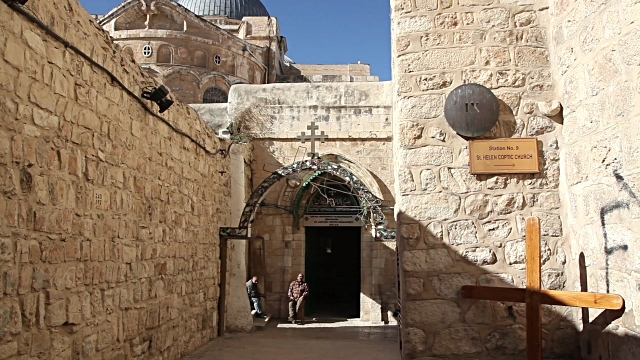The Way of the Cross - Via Dolorosa
12 expert reviews
"It's venerated as the route Jesus walked, carrying his cross, from the place of his trial and condemnation by the Roman governor Pontius Pilate to the site of his crucifixion and burial. " Full review
"The road leading from Lion’s Gate into the heart of the Old City is known as Via Dolorosa (Way of Sorrows) or the Stations of the Cross." Full review
"Near bustling Souq Khan Al Zeit St is the 7th Station, where it is believed Jesus fell for the second time. The station is a small chapel marked by signs on the wall of the souq." Full review
"A short distance up Aqabat Al Khanqah St from Souq Khan Al Zeit St, embedded in the stone wall on the left and marked with a red sign, is the stone and Latin cross marking the 8th Station." Full review
"The station is in the small chapel to the left of the entrance to the Armenian Catholic Patriarchate Hospice; you can walk down to the crypt." Full review
"The 4th Station along the Via Dolorosa, which marks the spot where Jesus is said to have faced his mother in the crowd of onlookers." Full review
"At the corner of Al Wad St and the western stretch of the Via Dolorosa is its 5th Station, where it is said that the Romans ordered Simon the Cyrene to help Jesus carry the cross." Full review
"From Souq Khan Al Zeit St, south of the Via Dolorosa, a stairway to the right (west) leads to a path looping around to a Coptic church." Full review
"West of Al Wad St along the western stretch of the Via Dolorosa is the 6th Station, marked by a brown wooden door on the left (south)." Full review
12.0
"Flanking the northwest corner of Temple Mount lies Via Dolorosa, which translates to "way of sorrows." This passageway led Jesus from Pontius Pilate's sentencing to Golgotha, where the..." Full review

